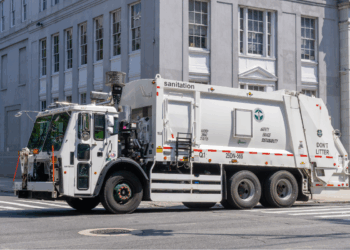Resource Recycling News
IWS acquires Filco to expand in NYC commercial waste zones
Interstate Waste Services, Inc. is expanding its footprint in New York City through the acquisition of Filco Carting Corp. This...
Beauty packaging NGO looks to expand
In its efforts to reduce beauty packaging waste and increase industry accountability, Pact Collective is seeking to add to its more than...
EU auditors support incentives to keep recycling viable
In a recent report, the European Court of Auditors (ECA) called progress toward recycling targets "too slow," and offered several...
Top Resource Recycling stories from November 2025
Stories exploring Denver's zero-waste plan, an Ohio plastics recycling start-up, Canadian PRO alignment, Michigan's bottle bill and a leader in...
Women in Circularity: Shweta Srikanth
In this series, we spotlight women moving us toward a circular economy. Today, we meet Shweta Srikanth of Ecore International.
Oregon’s Recycling Modernization Act faces injunction
Enforcement of Oregon's Plastic Pollution and Recycling Modernization Act (RMA) now hangs in the balance after a preliminary injunction was...
Policy Now | December 2025 – Year-end nears, policy talks continue
As we reach the end of another year, policy has shifted to advance our nation's infrastructure to one that is...
Ohio start-up turns plastics into high-end furniture
About 25 minutes' drive south of downtown Columbus on a light-industrial stretch of Frebis Avenue lies an unassuming 6,000 square-foot...
Atlas acquisition boosts Circular Services’ organics reach
Circular Services recently acquired Atlas Organics, a prominent organics processor with eight composting facilities nationwide, further expanding its organics portfolio.
WM adds PP and paper cups to curbside recycling lists
While people may not think twice about throwing away a takeout coffee cup, the nation's biggest hauler is looking to...



















